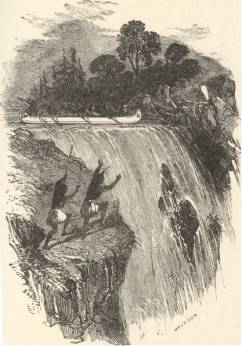

The government lets a random selection of the public review the options in a Citizen’s Assembly. The voters then make the final choice, in a referendum on the voting system British Columbia should use.
The politicians or any other special interests are not allowed to pre-empt the decision, because their interests might conflict with the public interest. General elections are supposed to serve the general interest.
All credit to the British Columbian government for this enlightened and disinterested attitude for the good of the community as a whole.
In the past thirty years, there has been a revision of voting methods, even in the English-speaking countries and more change is likely. This essay is just a period snap-shot of that process, but at an important stage of change.
Up till now, other governments have not been so generous towards the public
in letting them decide the rules of their own elections. It is true that the
New Zealand government allowed a referendum on different voting methods. But
unlike the BC government, they pre-empted the decision with the recommendation
of a government commission. And this official recommendation narrowly won the
referendum.
It was also the case that most of the big money went into persuading the New
Zealanders to keep the first past the post voting system. But the money bias in
favor of the traditional system doesn’t alter the fact that there was an
official bias in favor of the new system.
Yet New Zealand allowed far more open consultation than in Britain, until a
couple of recent exceptions, such as the Kerley report and the Sunderland
report. They had explicitly democratic terms of reference -- notably elusive
from some previous official studies of elections.
In short, the citizens of British Columbia are very fortunate to be allowed to
freely decide their democratic destiny. With that freedom comes responsibility.
The people will not only test the best voting system for their country. Their
decision will also be a test on their soundness of judgement.
Solon, the founder of Greek democracy, was asked whether he gave the Athenians
the best laws. He replied: No, only the best they were capable of receiving.
Here follows a simple guide to the serious contenders for voting system of choice.

This is the traditional voting system, that has resisted change longest in
English-speaking countries, such as Canada. It certainly has the advantage of
being familiar to the voters. As a student, many years before reform was an
issue, I remember being awoken reluctantly from my ‘dogmatic slumbers’ by
having to do an essay on voting methods.
This is just the situation faced by the voters of British Columbia, especially
those lucky enough to win a lottery ticket for a seat in the Citizens Assembly.
I took the first past the post system completely for granted. I didn’t see
anything wrong with it. There was a contest. Some candidates got the most votes
and were elected. Simple!
Well, I doubt there are too many people so uninformed nowadays.
The reform campaigners point out that first past the post elections may not elect a party, to govern, that had the most votes in the country for its candidates. In other words, first past the post elections of candidates may not translate into first past the post elections of parties to governments. The system may be time-honored but it doesn't work properly.
This is the main test applied here, to all the voting systems reviewed. Does the voting system give the voters what they ask for? ( Or, indeed, does it even allow them to ask for what they may be entitled? )
First past the post is also called the "simple majority" system. This is
another way of saying that the winner takes all. The candidate with more votes
than any other candidate, in a constituency, takes the seat. When several
candidates each take substantial shares of the votes, the winner may take the
seat with quite a small percentage of the constituency vote.
Winning with a third of the vote is not unusual. First past the post in the
twenty-some per-cents is not unknown. Victories on percentages of votes in the
low forties, are typical. This may be said of parties winning the government,
as well as of individual candidates, who make up the parties.
So what?
Well, it's not democratic. The majority of the votes, in the so-called "simple
majority" system are actually wasted. Most voters never get to choose a
personal representative. Supporters claim the system gives individual
representation. Actually, one representative monopolises the representation in
a single member constituency. Most of the voters usually don’t want him but are
stuck with him.
This fact, that first past the post doesnt do its job for so many people, has been blamed for the falling turn-outs at elections in America, Canada, and now Britain. Governments are responding by trying to make voting easier, as if present generations are unable to find their way to a polling station, should they wish.
This so-called democratic system may allow the government to be hi-jacked or usurped by a minority. The classic example is how Apartheid was introduced into South Africa. Two first past the post elections allowed the minority to win, because the majority vote piled up in constituencies, where it was largely wasted, electing representatives with many more votes than they needed.
Fear, of a minority usurpation of the government, was largely behind the growth of an all-party campaign for Fair Votes in Britain, from the last quarter of the twentieth century. Conservatives feared that a left wing Labour government might be elected with less than forty per cent of the voters. They didn’t want British industry to be nationalised.
By 1987 and Mrs Thatcher’s third election victory, the boot was on the other foot. The opposition part of the establishment, ‘the sub-establishment’ ( as E P Thompson called it ) feared the winner-takes-all game was too loaded against them. The opposition vote was always split between Labour and the Liberals, or Liberal Democrats, as they became.
As a consequence, in the early 1990s, the Labour party’s Plant report recommended a Supplementary Vote.

The Supplementary Vote would give the voters a second vote. Most of the minor opposition parties were to the Left. Most likely, their supporters would give their second vote to the main opposition party – none other than Labour.
The Supplementary Vote was like France’s Second Ballot, except that the voters wouldn’t have to go to the polls twice, to cast their two choices. Both these systems are a restricted form of the Alternative Vote, used in Australia’s general elections to the lower house of parliament.
Analysts were under no illusion that much of British Labour favored some such system, because French and Australian socialist or Labour parties seemed, at the time, to prosper under the Alternative Vote-type systems. These systems tend to make the votes, for the break-away Left, count towards the main left-wing party.
That is just one instance of how a given voting system can trick a result in favor of some political faction. Conversely, first past the post tricks a result in favor of an orthodox bloc, which by definition doesnt suffer so much from split voting. The British Tory party is likely to go to its grave, clinging onto the first past the post system, because it darent let go of the hugely unfair electoral advantage from keeping the votes of its two main left wing opponents divided, instead of united against themselves.
The Alternative Vote is called Run-off Voting, in North America. More fully,
it is known as Instant Run-off Voting, bearing in mind that the voters make all
their choices at one visit to the polls.
The Alternative Vote allows the voters more than one alternative choice of
candidate. The alternative vote gives the order of choice for candidates. The
voters put the numbers 1, 2, 3, 4, etc by their first, second, third, fourth,
etc choice of candidates.
One might think that this would elect the most prefered candidates, and therefore, the Alternative Vote must be democratic. However, this is not the case. The reason is that not only the vote must be democratic but also the count. In the count of the alternative vote, the voters’ order of choice does not ensure that the candidates will be elected as most of the voters prefered.
The alternative vote is conducted in a single member system. If one candidate gets more than half the first preferences, then no other candidate can over-take. The election is over without reference to later preferences. If no candidate has an over-all majority, in the first round, then the candidate, least in the running, must stand down. This releases the already failed candidate’s second preferences to help make-up a majority for one of the remaining candidates. This process of elimination is repeated for as long as it takes to find the over-all winner.
The problem with this system is that the lesser preferences of candidates
with the least first preferences tend to be decisive in electing the
front-runners for a single seat. This is, as Winston Churchill said, ‘the worst
votes for the worst candidates’.
The heart of the problem is the single member system which ensures that one
candidate monopolises a constituency. In a multi-member constituency, the front
runners needn’t be played off against each other. More than one of the most
popular candidates could be elected, provided they reached a big enough share
or proportion of the votes in the multi-member constituency.
In other words, a multi-member system is needed that allows more of the
first and higher preferences to count towards candidates’ election.
To this end, Churchill provided the other wittiest saying about electoral
reform: I would rather be one-fifth of the members for the whole of Leeds than
one member for a fifth of Leeds.

Both first past the post and an alternative vote are usually single member systems for general elections. The two main parties at least agree on keeping the single member system, because it narrows the choice down to the main two party contenders, when voting for anyone else would be a wasted vote.
Much negative campaigning from the big two parties has concentrated on
making the smaller parties an object of ridicule, because a vote for them would
be wasted.
This twisting the voters' arms is bound to be resented and degrades
democracy.
The supporters of a two-party system justify this corraling the vote as
forcing the voters to make their mind up, even if between two unpalatable
choices. Because, it makes for decisive government, where one of two parties
get most of the seats, even if ( as usual ) they get less than half the votes.
Cliff-hanger elections are said to result from allowing the vote to be shared
out between more than two parties. Then these parties decide in 'smoke-filled
rooms' on a coalition, after the election. The voters are left out from a
decisive say in who shall govern. The people dont even get the two-party
system's choice between the lesser of two evils.
The sections, below, on proportional elections, will look at this question.
It is commonly said that the Alternative Vote is not a wasted vote, because one's second preference ( or lesser preference ) ultimately helps to elect someone. But the fact is that the alternative vote does waste votes. The most important votes, the first preferences are especially wasted, because only the first preferences of one candidate can count in a single member constituency. This usually means more than half the first preferences are wasted.
Even in a quite small multi-member constituency, of three or four seats, something like two-thirds of the first preferences will be for candidates who get elected. That is in Ireland with proportional elections called the single transferable vote. STV is a big improvement, over the alternative vote, in representative democracy
At this point, many electoral campaigners protest that most systems of proportional representation in the world dont use STV's preference voting with a proportional count. Other systems are based on proportional counts of X-votes for party lists.

Party list systems thru-out the world all work on the basic idea that a vote is for a party, rather than individual candidates. Parliamentary seats are then shared out between the parties in proportion to their number of party votes. Typically, the party candidates on a list are elected in the order their party boss has put them.
With STV all the voters may give their order of choice for the candidates' election. But with party lists, as few as one person per party ( the party boss ) has a preference vote to decide the order of election. That is to say, the difference between the single transferable vote and the party list systems is the difference between democracy and dictatorship, as far as individual representation is concerned.
Part of the trouble is the failure to use words to say what they mean.
People thoughtlessly speak of STV and list systems as 'proportional
representation' or PR. Truth to tell, list counting is not representative of
the people at all. Properly speaking, party lists offer proportional
partisanship. Every voter for a party candidate is assumed to be a partisan who
would just as well vote for every other candidate on the same list.
Party divisions are treated as absolute. Human individuality is degraded to
tribal factionalism. List counting offers no room for individual freedom or
national unity of choice.
Some campaigners will claim these objections are to closed list systems. Open lists do offer some individual choice. Where these are allowed in some countries of Europe, voter input tends not to be very effective in changing the list order.
In the late 1970s, the British parliament did entertain open lists. An MP pointed out that they could elect a list candidate, in principle, even if he won no personal votes. That is because open lists are still basically for a party vote. The party vote may be big enough to win the party enough seats to put a personally unwanted candidate into parliament.
We may safely assume that was why, in the late 1990s, the new Labour
government announced by diktat a closed list system for Britain's European
elections.
It was realised that open lists are potentially an embarrassing farce of a
concession to democracy. So, the Labour leadership opted for the oligarchic
closed lists.
Of course, closed lists are still a concession to small parties, who get
their share of seats for party votes. Labour so rewarded their Liberal Democrat
allies with seats in the European parliament. Too often, that's all small
parties care about -- seats for themselves at any damage to democracy.
Let not any one deceive you that differences between voting methods are mere
details. Party list systems abolish representative democracy.
A further and fatal consequence of the list system is that if any politician wants to make a difference, he has to abandon the party fold and start a new party. The party-proportional count facilitates a lot of parties. Even the biggest may only win a fairly minor share of the total vote. The voters have no say in how these parties should combine to form a government. Coalitions can take months of wrangling behind the scenes.
This is the system and the situation in Israel. In november 2002, the Prime Minister Ariel Sharon called an election less than a day after saying it would be irresponsible. He said he had no alternative but to succumb to political blackmail from potential coalition partners.
It is widely recognised that list systems lack individual representation and
make for weak government from too many party divisions. So, a compromise has
been widely adopted that combines the single member system, allegedly for
individual representation and strong government, with the list system,
allegedly for the proportional representation especially of smaller parties.
These systems are called Additional Member Systems or Mixed Member Systems.
Typically, voters have an X-vote for a single member and an extra X-vote for a
party, submitting a list of candidates.

The first practical problem with combining single members with list members is to decide how many to have of each. There is no agreement on this in the world. In Britain alone, the ratio of list members is higher for the Scottish than the Welsh assembly. The Jenkins Commission advocated a yet lower level of list members for British general elections.
Why does it matter?
Well, it matters, because the relative numbers of list to single members
decides whether more or less seats will be shared with smaller parties. After
Japan's first Additional-members election, the number of list members was
reduced. This drastically cut the number of Communists winning list seats.
The results of the system can be fixed by changing the relative numbers of
mixed members.
Lack of principle makes the amount of combination between single members and list members a bone of contention. The system cannot be stable when there is no reason why those in power shouldnt change the mixture to help keep themselves in power. This encourages a power struggle instead of getting on with government.
Some innocents think that a 'purely proportional' system would solve the
problem. The German Additional Member system was the first model for other
countries. It has equal numbers of single and list members. There are enough
list vacancies for parties with less than five per cent of the votes to be
elected.
The only reason, they are not, is because of an arbitrary rule that parties
with less than five per cent of the votes may not have any representation. When
the Federal Democrats slipped just below this five per cent, in some of the
German elections, they found themselves losing all their forty seats or so, for
only slightly reduced support.
Also, there is no agreement what level the threshold should be. Different
levels will bring in or push out different parties. These are either potential
friends or enemies of a government. The New Zealand government shot itself in
the foot by setting a threshold just above the level of support for a party
that was its natural ally. ( Perhaps they hoped to inherit its vote. )
Threshold levels offer another means to rig the results of an additional member
system.
Some say: get rid of the threshold without prejudice to the
party-proportional count. But there is good reason why there is not a consensus
to do so. It is precisely the reason given by premier Sharon, who has to work
under a highly party-proportional system. Too many small parties can hold the
balance of power and hold the main parties to ransom.
In short, the party-proportional count wont hold-up in principle. The bigger
battalions feel obliged to take rather more than their partisan share. Some
might think that doesnt matter much. However, the basic problem remains.
For decades after the second world war, West Germany was only a three-party
system. Yet the small third party held the balance of power. The Federal
Democrats, rather than the German people decided, by their choice of coalition,
whether the Christian or the Social Democrats took power.
When New Zealand adopted the German system, the government was stung in the same way. Supporters of the reform have tried to make out it was an abberration, that the rogue party was punished at subsequent polls, the system has 'settled down', and so forth.
Both Germany and New Zealand got no further than discussing changing from
this 'tail-wags-the-dog' system of additional members. It's difficult to
persuade those in power, by virtue of a system, to change it.
The additional member system fails to allow the people to choose a
government.
Some say this system allows voters to choose a coalition by voting for one party with one's vote for a single member and voting for its coalition partner with one's list vote. This assumes that the party of one's choice has a safe seat in one's single member constituency. For most voters this will not be true. If their first vote may be wasted, they may feel obliged to use their second vote for the same party. Their decision depends on other imponderables, such as whether their second vote will help their first party of choice to win more seats in the region, before they think of giving the second vote to another party.
The double vote ( to use a third name for this system ) also fails individual representation. The vote for one's single member is supposed to be a personal vote. But small party candidates could not win enough personal votes to beat the big parties. They had to rely on impersonal party votes to get in parliament. And even if big party candidates are so personally unpopular as to lose their single member constituency, they can still be elected from a high position on their party's list.
The single member system has been reviled as a safe seat system. The additional member system is doubly so. The personal representation it pretends to offer is a mockery. Irritation, at this electoral cheat, came out in the public enquiry of the Sunderland committee on Welsh local democracy.
In sum, the additional or mixed member system is badly defective in delivering choice of representation or choice of government. By reasonable standards of quality control, it should be decisively rejected.
Most people do not know that there is any other option for electoral
reform.
There is.
So far, we have discussed a spot vote with a majority count ( first past the
post ), or, a preference vote with an over-all majority count ( alternative
vote / run-off voting ), or, a spot vote with proportional counting ( party
lists ), or a combined system of additional members.
We have not discussed the remaining possiblity: a preference vote with a
proportional count ( the single transferable vote ).
Since this page was written, Sir David Steel has lectured in favour of replacing AMS with STV for the Scottish parliament ( as described on my page about power in Europe and the English regions ).
Part 2 was formerly on a separate web page:

Proportional representation was originally invented, in the mid-nineteenth century, as a proportionally counted preference vote, by the Danish statesman Carl Andrae. In Britain, soon after, Thomas Hare independently came up with the same formula. On the continent, the preference vote was soon abandoned by politicians who thought that the proportional count only mattered for their parties, rather than the election of individually prefered candidates.
In English-speaking countries, the campaign for 'Hare's system', and its
development into STV, persisted. This no doubt owed to a tradition of
individual freedom. Above all, it owed to the support given by John Stuart
Mill, who immediately recognised that Hare's proposals, to improve
representative democracy, were much better than his own.
He called the reform both 'proportional representation' and 'personal
representation' to emphasise that prefering the best individual representatives
was as important as representing all portions of the nation. Mill never made
the mistake of many modern electoral reformers that democracy was no more than
equal treatment between political parties in an election count.
Since 'Fair Votes' campaigns started in Britain and were taken up in other English-speaking countries, this fairness between the parties is what they have meant. To be fair to British Columbia's Fair Votes campaign, they have said that proper representation of small parties is an important consideration but not the only one. And they have been generous in response to the British Columbian government's generous agenda for electoral reform.
Besides fairness, there is freedom to consider. After all, to 'elect' means to choose-out. Voting systems should not cheat voters of a free choice or the means to put it into effect, as we saw in the previous part of this essay.
Not only fairness and freedom but also fraternity is needed. A rounded
definition of democracy, as good as any, is the French republican slogan:
liberty, equality, fraternity.
A genuinely democratic voting system puts these principles into practise. This
is what STV does. Freedom of choice comes from being able to prefer candidates,
who must win equal portions of the votes, in a multi-member constituency,
before they can be elected.
In a single member system, personally unpopular representatives rely on being the nominee of a party, for whom the constituency is a safe seat. With STV, there are no such cheats of the popular choice, because candidates of the same party have to compete for preferment. And only the favorite candidates of the parties with sufficient portions of support will win seats with STV in a multi-member constituency.
An STV general election has in-built primary elections which all
the voters can take part in. This is a big improvement on primaries exclusive
to party members. In a democracy, the voters' right to decide, which way a
nation goes politically, includes the right to decide which policy ways the
parties go.
It means that parties are much less likely to be hi-jacked by small groups
taking over the selection committees of the single ( safe ) seat system. This
was the complaint against British Labour being infiltrated by Trotskyists in
the nineteen seventies and eighties. And it was alleged, in the ensuing period,
that more Tory selection committees were choosing candidates in favor of
capital punishment.
The democrat believes it is better to let the people make their own mistakes than have 'elites' make them on their behalf. This is the wisdom that currently informs British Columbia. Long may it prosper.
The proportional count, used with transferable voting, is a logical continuation of an over-all majority count for a single member, requiring at least half the votes for a candidate's election, which none of the other candidates can exceed. ( If two candidates got half the votes each, lots would have to be drawn for the winner. ) In a two member system, two candidates each require one third of the votes, which cannot be exceeded by the remaining candidates. This gives a two-member proportional representation of two-thirds the voters. In a three-member system, the PR is three-quarters, and so on.
This system of proportional counting is called the Droop quota, and it is standard to STV.
Party lists systems and Additional ( party list ) member systems have no agreed proportional count. They have a chaos of methods for sharing out the seats for party votes, which more or less favor large or small parties. This is another source of bias in the result, to those mentioned in the previous part.
There are technical objections to both quota methods and divisor methods of conducting a party proportional count. The more basic objection is that they impose a dogmatic rationalism on the voters presumed to be all-or-nothing partisans, whose vote may count for any one on a party list, once they have voted for a party candidate. Or, worse, the voters are given only a vote for a party, denying the right to elect individual representatives given in the Sankey Declaration and the following UN Declaration on Human Rights.
As a matter of fact, people are not blind partisans, except in the most
extreme instances of tyrannical disrespect for human beings as individuals.
Party lists ignore the evidence of people's wishes. Party list bosses only
allow the voters to tell them what they want to hear, namely that the people
are ideological conformists to party lines.
STV allows voters to prefer candidates on purely partisan lines, if they wish.
Proportional representation enables proportional partisanship. But the reverse
is not true, as shown by party lists.
The transferable vote allows voters to prefer candidates of more than one
party, enabling supporters of one party to say which other party they would
most like to see in coalition with their most prefered team. STV allows the
voters to express a degree and kind of national unity, on which a governing
majority can be based. The public become the stabilising arbiters of
policy negotiations.
This effective method of allowing the public to form a government is another
essential attribute of a democratic voting method unique to STV.
This is what was meant by saying STV satisfies the principle of fraternity. It allows offering a degree of preference to friendly candidates across social and political divides. A party vote only counts for some manifesto package, peculiarly relevant to leaders or activists. A transferable vote works by electing individuals, with all the attributes, political or social, relevant to the voters. In particular, candidates, who agree on a single issue can be prefered. STV may act like a referendum taking place within the general election. Parties are less able to jointly ignore popular issues or force policy dilemmas on the public.
As the proportional election of individual candidates, STV does not discriminate against independents. Like them, party candidates have to earn their portion of the votes thru personal preference. Because they depend on the public rather than their party boss, party candidates can be more independent on particular issues. With the list system, the party candidate may need only a sufficiently high ranking on one preference vote, that of his party boss ordering the list to pre-empt the election. Such privileged candidates become party servants rather than public servants.
The proportional count of a preference vote is what makes STV fulfill the above-described requirements of a democratic voting system, and also allows it to work for all kinds of election, political or professional, and at every level of government. ( In Eire, STV is used at every level of government, from local to European elections. )
The lack, of preference or proportion or both, makes other voting systems unworkable at some level, despite the low standards of election law. These short-comings are disguised by the much wider use of party list systems, in particular the fashion in additional or mixed member systems. But no system ( other than STV ) is used at every level of government.
It is not generally recognised that STV has a role to play in elections
for a single vacancy.
Take the French presidential elections by the Second Ballot. In the first
round, the socialist candidate had so little personal support that the National
Front candidate Le Pen came second, and won the right to a second round with
Chirac, the front-runner.
In the second round, Le Pen won no further support and Chirac took some eighty
per cent of the votes.
That landslide victory only represented Chirac's popularity relative to Le
Pen. It gave little idea of the main blocs of French public opinion.
If the successive rounds of the presidential elections were conducted with a
proportional count of even up to five rounds, it is doubtful the national front
candidate would have got beyond the first round, because that party did not
achieve a fifth of the votes. With the Droop quota, the first round could
require four candidates to each win one fifth of the votes. The second round
would then require three of those four to each win one quarter the votes. The
third round sees two candidates each win one third the votes. In the fourth and
final round, the candidate, with over half the votes, is sought. Such a way of
using STV is not without its critics, even among STV supporters, but it would
be a huge improvement on the Second Ballot.
Notes:
My other web pages give other information on voting method, including examples of STV elections effecting primaries, governing majorities, informal referendums, and the representation of social as well as party political minorities. Also discussed, in places, is why other voting systems dont work at every government level, etc.
In his Autobiography, John Stuart Mill tells how he started a radical
journal to try to change the climate of British political opinion. Looking
back, he was realistic about the limited influence of reasoned persuasion. He
guessed that all he decisively promoted was a democratic constitution for
Canada.
I thought this justified calling Mill a founding father of Canadian democracy.
( Not every one agreed with me. )
The illustrations come from R M Ballantyne's children's novel Hudson Bay. They are by Bayard and other artists, based on sketches by the author.
Best wishes to the citizens and government of British Columbia in their democratic endeavors.
Richard Lung
15 june 2003.